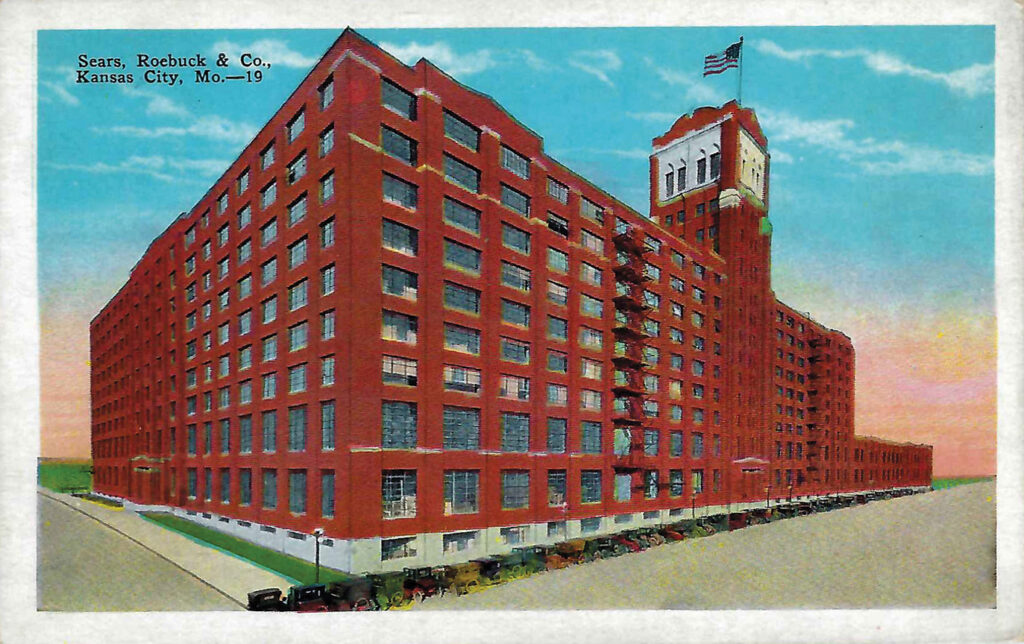
Michael Bushnell
Publisher
Just in time or the holidays, we bring you this postcard of the iconic Sears Distribution Center that once stood at 15th and Cleveland, just east of the railroad trestle.
The massive 1.1 million square foot mail order facility was completed in 1925 and was the catalog distribution center for the entire Midwest region. Children of today will sadly never know the magic of receiving the Sears Catalog Wishbook just prior to the holiday season every year.
The first Sears Wishbook came out in 1933, roughly thirty years after R.W. Sears mailed his first flyer under the R.W. Sears Watch Company banner. The inaugural catalog featured the Miss Pigtails doll, a battery-powered toy car, Lionel electric trains and live singing canaries, among other things.
America was in the heart of the Great Depression so Sears put colorful images of Christmas scenes and happy children on the Wishbook cover to provide the general population a departure from the daily reality of bank failures, food lines and soup kitchens.
From then on, the cover featured images of Santa Claus, Christmas trees and children. A Currier & Ives print was featured on the cover of the 1982 Wishbook. That first Wishbook was 87 pages, 25 of which were dedicated to toys and 62 pages of gifts for adults. By 1968 when the Wishbook was officially designated as the Christmas Book Catalog, it had swelled to 605 pages with roughly a third of that, some 200 pages, dedicated to toys.
With the advancement of the digital age, Sears launched Wishbook.com in 1998 and went interactive in 2009, publishing an online Wishbook catalog that featured streaming Christmas music and allowed users to virtually turn the pages of the catalog.
The image on this E.C. Kropp-published postcard shows the Sears facility along Truman Road. The Goetz Brewery was just to the west of the Sears building, but was razed in 1977 to make way for the expanded Sears facility and upgrades to the I-70 off ramps to 18th Street.
At 7 a.m. on June 1, 1997, Controlled Demolition Incorporated of Baltimore used roughly 2,700 pounds of explosives placed in over 2,900 strategically drilled holes to bring the structure down. Despite being only 18 feet away from the new postal facility, the timed detonation of the charges allowed no damage to the adjacent structure.
















